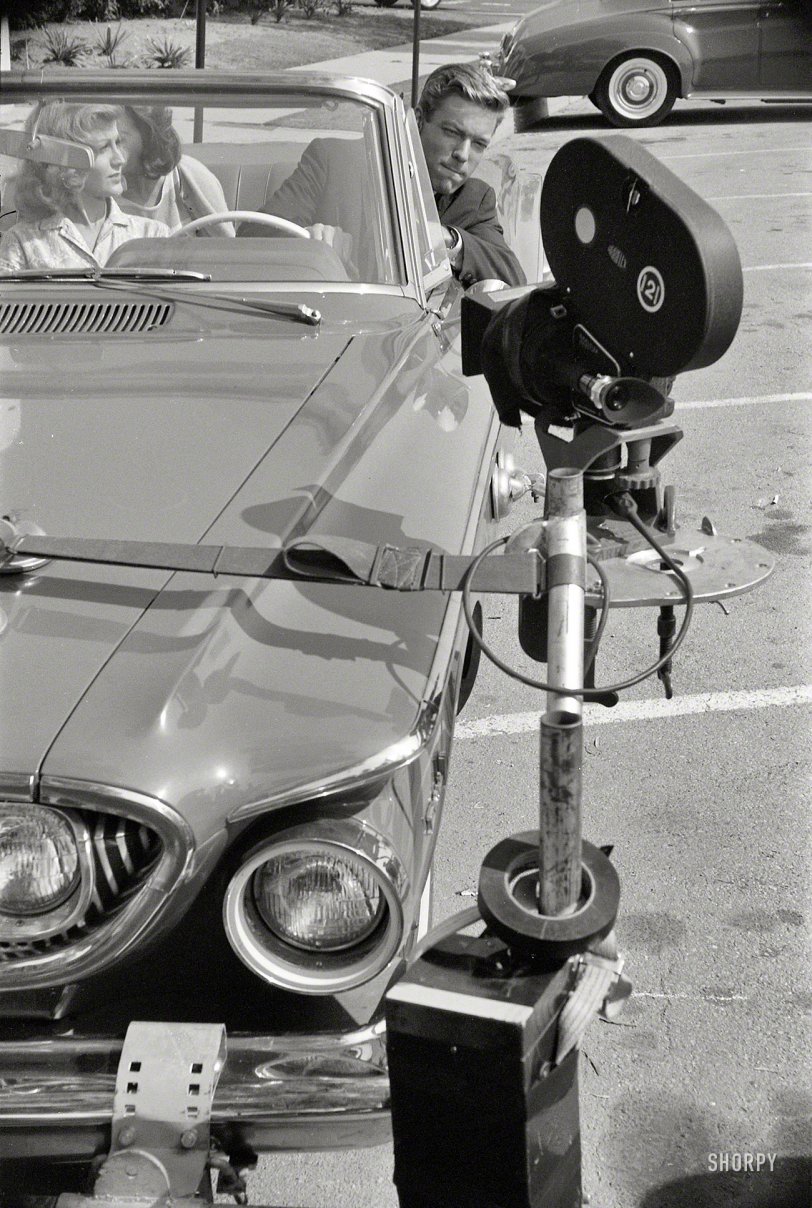


Framed or unframed, desk size to sofa size, printed by us in Arizona and Alabama since 2007. Explore now.
Shorpy is funded by you. Patreon contributors get an ad-free experience.
Learn more.

- What a headache!
- Baldwin 62303
- Baldwin VO-1000
- Cold
- No expense spared
- Tough Guys
- Lost in Toyland
- And without gloves
- If I were a blindfolded time traveler
- Smoke Consumer Also Cooks
- Oh that stove!
- Possibly still there?
- What?!?
- $100 Reward
- Freeze Frame
- Texas Flyer wanted
- Just a Year Too Soon
- WWII -- Replacing men with women at the railroad crossing.
- Yes, Icing
- You kids drive me nuts!
- NOT An Easy Job
- I wonder
- Just add window boxes
- Icing Platform?
- Indiana Harbor Belt abides
- Freezing haze
- Corrections (for those who care)
- C&NW at Nelson
- Fallen Flags
- A dangerous job made worse
Print Emporium
Dr. Kildare: 1962

1962. "Richard Chamberlain at MGM Studios, Los Angeles, filming scene for his TV show, Dr. Kildare." Photo by Earl Theisen for Look magazine. View full size.
R-R
A Rolls-Royce Silver Cloud is in the background parked (?) over the curb. Since the exhaust exits under the left rear fender let's hope they parked carefully, or they will have quite a repair bill.
The Girls In School
I was in elementary school at the time this show was on television. Most of the girls in my class were in love with Dr Kildare. They would carry around b&w trading style cards of him and Dr Ben Casey.
Arri 2C
The camera is an Arriflex 2C designed as a handheld camera during WWII for the German army. You can see the motor/hand grip where the wire plugs in. It is sitting in an Arri cradle which turned it into a stationary camera that could be mounted on a tripod or other mounting device. Another poster commented it is not blimped or quiet, when running they made a sound like a loud coffee grinder. It was the first through the lens rotating mirror reflex motion picture camera, a design that is the basis of all modern motion picture cameras. It was used extensively by Leni Riefenstahl for filming Triumph Of The Will.
Arriflex II brilliant with one flaw
Yup, that's an old Arriflex II model. It was less than half the size and maybe 1/3 the weight of any other truly professional 35mm camera in use at the time. It was revolutionary because it brought the idea of highly mobile and even handheld camera use to movie production.
It would have conquered Hollywood except for one thing: it lacked the super-steady pin registration scheme found in larger studio cameras so there was sometimes a subtle image bobble visible on screen, similar to what you see in home movies. No big deal for shots like this, but it was sometimes obvious with tripod mounted footage. In general, shots from this camera could not be used in post production optical work such as titles or credits superimposed over running footage which emphasize the not perfectly steady image.
But there is no denying that modern camera technique owes much to this little camera.
Anyone seen
Anyone seen where I put the darn Gaffer Tape?
Unblimped Arri
It's an Arri all right, but notice that it's not blimped. The sound for this scene therefore was presumably dubbed. Also, note the handy-dandy suction cups anchoring the camera rig. The magazine width indicates 35mm, a minimum negative size by the '60s as television was getting much sharper and needed the better resolution--a far cry from the good ol' days of 16mm and kinescope, and similar, at that time, to the jump we've seen from "standard" to HDTV.
I don't know what it is Marg
it wasn't there when we went in.
10-K
I had my first crush on Dr. Kildare when I was 12. You either liked Dr. Kildare or Ben Casey.
























On Shorpy:
Today’s Top 5